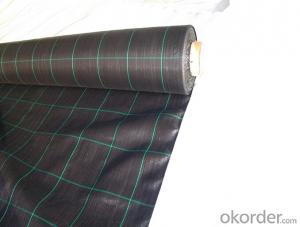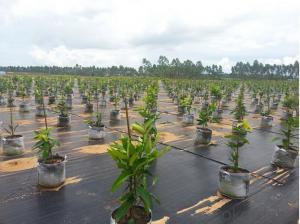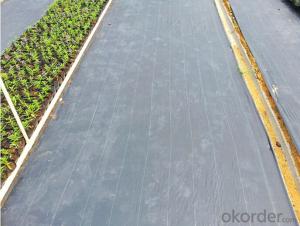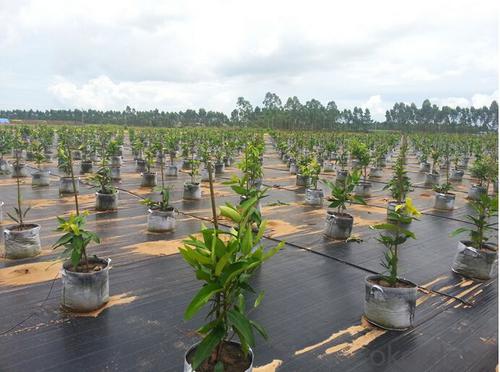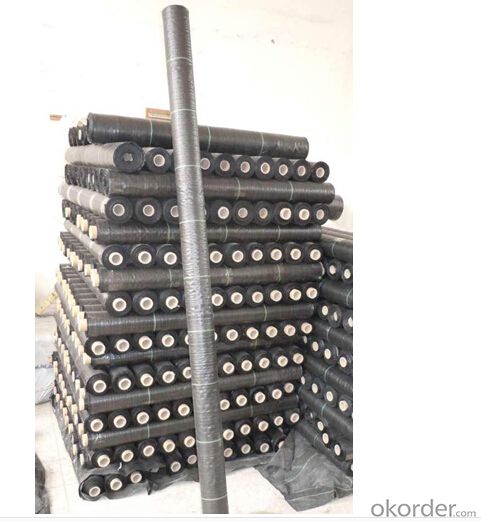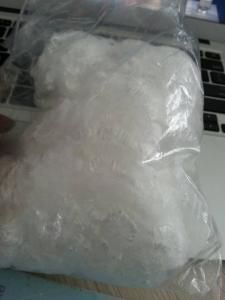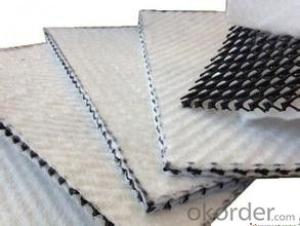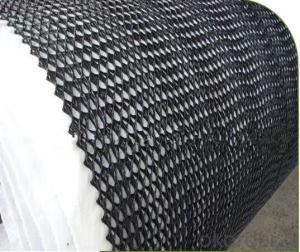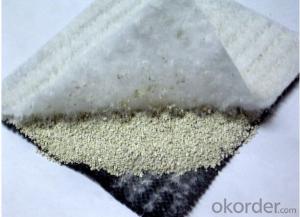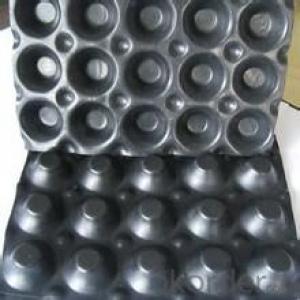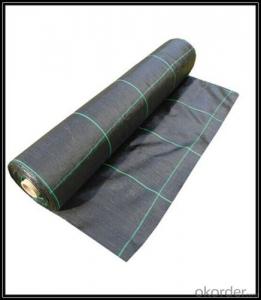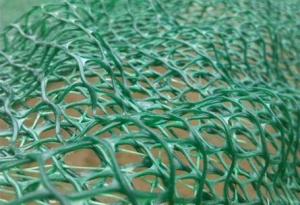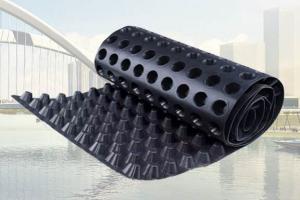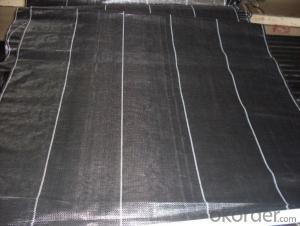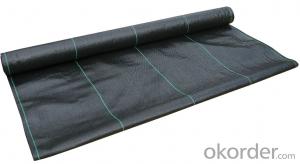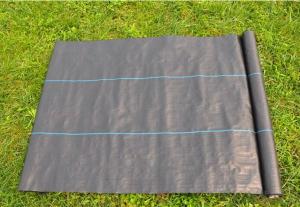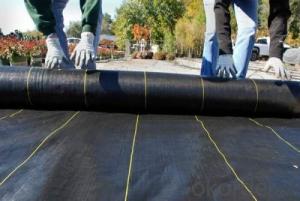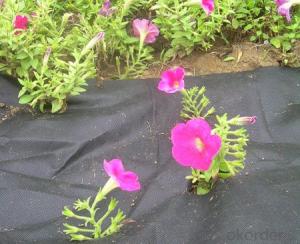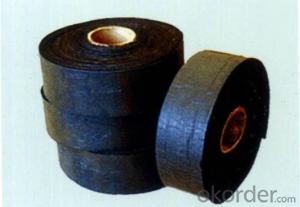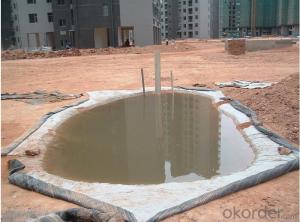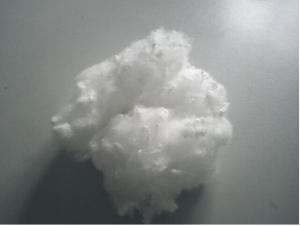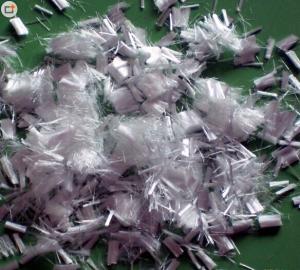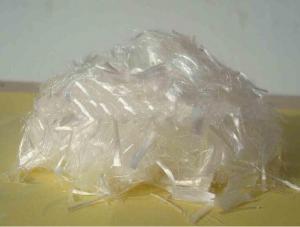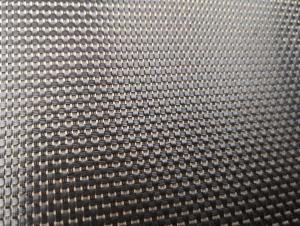Polypropylene Woven Geotextile/Anti Weed Mat
- Loading Port:
- Qingdao
- Payment Terms:
- TT OR LC
- Min Order Qty:
- 10000 m²
- Supply Capability:
- 1000000 m²/month
OKorder Service Pledge
OKorder Financial Service
You Might Also Like
Specification
1. Introduction of Landscape Fabric
Weed block landscape fabric not only prevents weeds,it encourage root growing by keep soil moist and cool.Made of UVtreated polypropylene,this costeffective weed control fabric feteures allow the free flow of air, water and nutrients to the soil while blocking sunlight and weeds.
Weed block helps minimize your yard work since it stops weeds from growing .You do not have to use
herbicides,which can damage your lawn and cause harm to children and animals.Made of polypropylenematerial ,weed block is easily cut to fit in your garden or hard landscape areas.
2. Technical Data Sheet of Landscape Fabric
Norms | Weight(ASTM D 3776:2009):g/m2 | 120 | 140 | 160 | 170 | |
Tensile strength(ASTM D 4632:2008,C.R.E,grab method:N(lbf)) | Warp | 370(83) | 490(110) | 500(112) | 505(113) | |
Weft | 249(56) | 320(70) | 290(65) | 335(75) | ||
Elongation (ASTM D 4632:2008 C.R.E grab method 100%) | Warp | 7.3 | 11 | 9.9 | 13.9 | |
Weft | 5.7 | 7 | 7.4 | 9.1 | ||
Tearing strength(ASTM D 4533:2011 C.R.E, Trapezoid method:N(lbf)) | 120(27) | 140(31)
| 150(34) | 170(38) | ||
98(22) | 110(25) | 110(25) | 155(35) | |||
Bursting strength ASTM D 3786:2009,Hydraulic method:KPa(psi) | 923(134) | 1480(215) | 1280(186) | 1590(159) | ||
Puncture resistance ASTM D 4833:2007,C.R.E,N(lbf) | 230(52) | 275(60 | ||||
3. Function of Landscape Fabric
1).Prevent growth of weed
2).Prevent use farm chemical and good to earth and environment
3).Assure our body heath eating healthy earth products
4) Exceptional toughness and strength
5). Durable, tear-resistant; won't rot or mildew
6). Lightweight, easy to install, follows natural ground contours
7). Ideal for use in garden,flower greenhouse,fruit garden, landscaped beds,under decks and walkways.
4. Application of Landscape Fabric
1). Weed block for landscaped garden beds
2). Permeable liners for planters (stops soil erosion)
3). Weed control under wooden decking
4). Geotextile for separating aggregate / soils under walkway blocks or bricks
5). Assists in preventing paving from settling unevenly
6). Landscape fabric prevents soil erosion
5. Product photo of Landscape Fabric
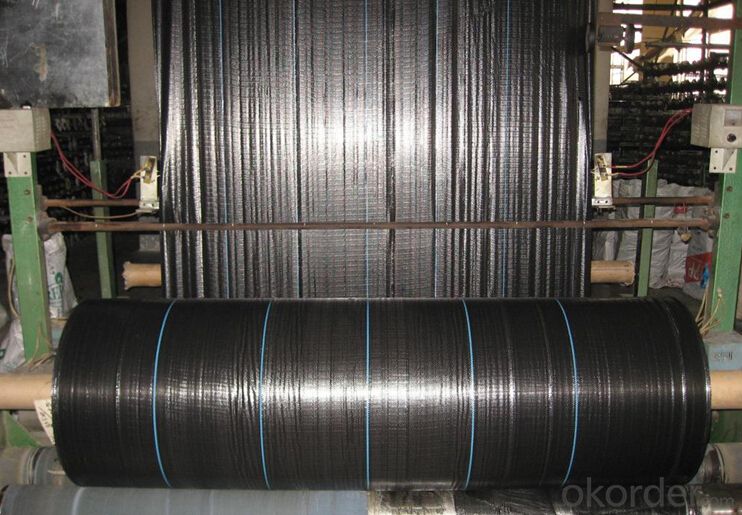
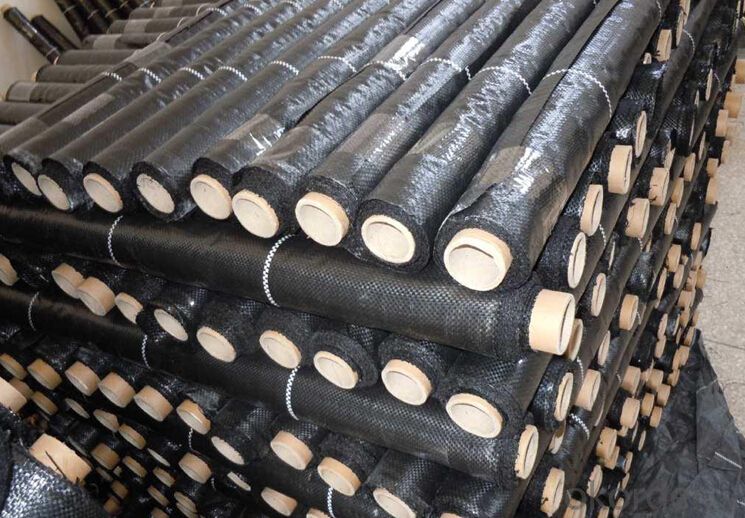
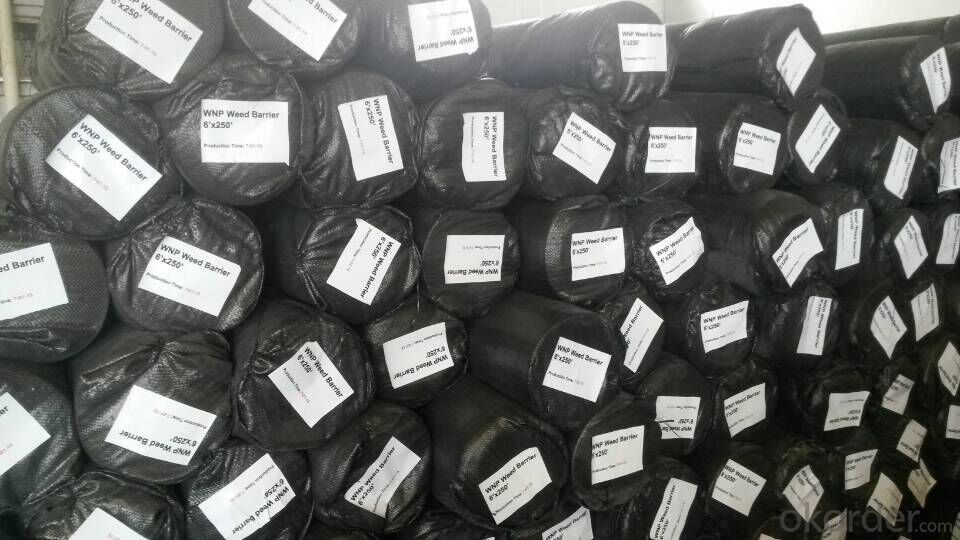
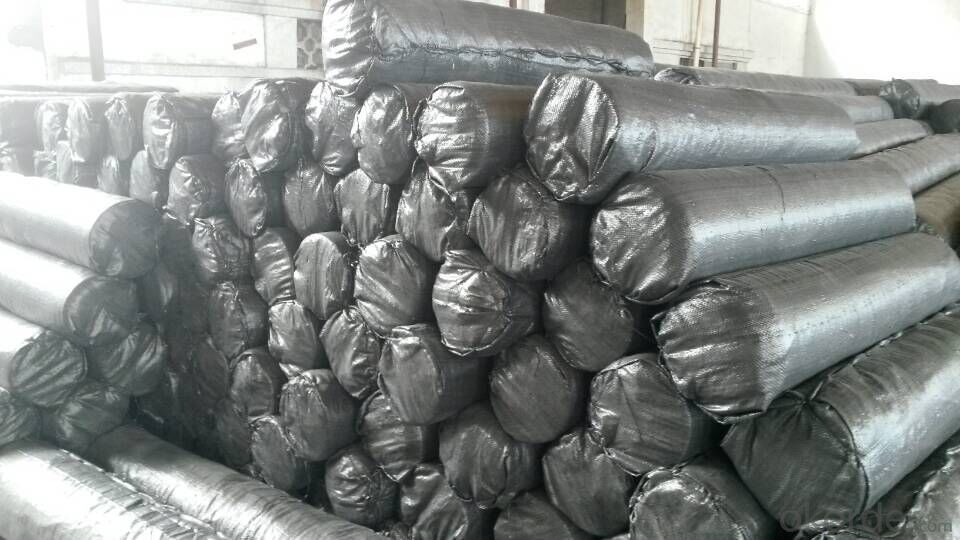
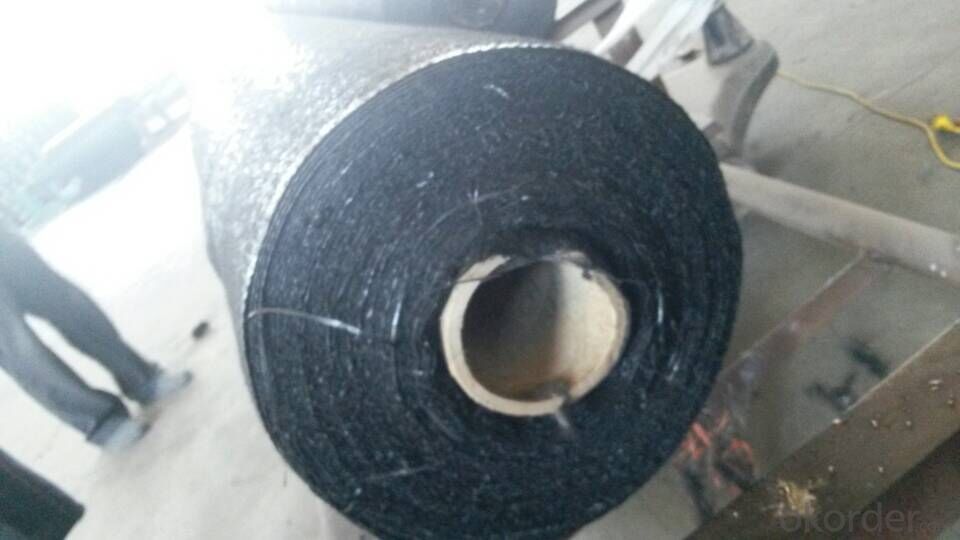
- Q: Are earthwork products suitable for use in riverbank stabilization projects?
- Yes, earthwork products, such as geotextiles, geogrids, and erosion control blankets, are often used in riverbank stabilization projects. These products provide effective erosion control and help prevent soil loss along riverbanks, thereby contributing to the stability and longevity of the riverbanks.
- Q: How can geocells be used in slope reinforcement?
- Geocells can be used in slope reinforcement by providing a stable and reinforced structure to prevent soil erosion and slope failure. These three-dimensional honeycomb-like structures are filled with soil or aggregate material, creating a strong and stable foundation. The geocells help to distribute the weight of the slope evenly, reducing the risk of landslides and erosion. Additionally, the cells can be vegetated, allowing for the growth of plants and vegetation, further enhancing the stability of the slope. Overall, geocells are an effective and sustainable solution for slope reinforcement.
- Q: Can geosynthetics be used for pond lining?
- Yes, geosynthetics can be used for pond lining. Geosynthetics, such as geomembranes and geotextiles, are commonly used materials for lining ponds and other water containment structures. They provide excellent impermeability, durability, and resistance to various environmental conditions, making them an ideal choice for pond lining applications.
- Q: What are the specific applications of geotextiles in earthwork projects?
- Geotextiles have various applications in earthwork projects, such as soil stabilization, erosion control, filtration, drainage, and separation. They can be used to reinforce soil, prevent erosion by acting as a barrier, filter water, and separate different soil layers. Geotextiles are commonly used in road construction, slope stabilization, landfill engineering, and other civil engineering projects to enhance the performance and longevity of the structures.
- Q: Can earthwork products be used in underground storage applications?
- Yes, earthwork products can be used in underground storage applications. These products, such as geotextiles and geosynthetics, are commonly used to reinforce and stabilize the ground in underground storage facilities, providing additional strength and durability to the structure. They help prevent soil erosion, improve drainage, and enhance the overall performance and lifespan of the underground storage system.
- Q: How do geogrids improve the stability of reinforced soil slopes?
- Geogrids improve the stability of reinforced soil slopes by increasing the tensile strength and resistance to deformation of the soil. They act as a reinforcement element by distributing the lateral forces and reducing the potential for slope failure. The geogrids interlock with the soil particles, creating a composite material that can withstand higher stresses and maintain slope stability even under heavy loads or external forces.
- Q: What are the specific applications of geogrid-reinforced walls in earthwork projects?
- Geogrid-reinforced walls have several specific applications in earthwork projects. These include slope stabilization, retaining walls, and erosion control. Geogrids are highly effective in stabilizing slopes and preventing soil erosion by providing reinforcement and increasing the overall tensile strength of the soil. They are also commonly used in the construction of retaining walls, providing additional support and preventing soil movement. Overall, geogrid-reinforced walls play a crucial role in enhancing the stability and longevity of earthwork projects.
- Q: Can earthwork products be used in coastal erosion control?
- Yes, earthwork products such as geotextiles, geogrids, and retaining walls can be used in coastal erosion control. These products can help stabilize the soil and prevent erosion by providing slope stabilization, erosion control, and soil reinforcement.
- Q: Are earthwork products eco-friendly?
- Yes, earthwork products can be considered eco-friendly. Earthwork products, such as geotextiles, geogrids, and erosion control materials, are designed to minimize environmental impact and promote sustainable practices. These products are typically made from natural materials or recycled materials, reducing the need for extraction of new resources. They also help prevent soil erosion, stabilize slopes, and improve water quality, which are essential for preserving the environment. Additionally, the use of earthwork products can reduce the need for heavy machinery, further decreasing carbon emissions and energy consumption. Overall, earthwork products contribute to a more eco-friendly approach in construction and land management.
- Q: How are geotextile tubes used in shoreline stabilization?
- Geotextile tubes are commonly used in shoreline stabilization to create barriers that prevent erosion and protect the coastline. These tubes are filled with sand or sediment and then placed along the shoreline, forming a barrier that absorbs wave energy and prevents further erosion. The geotextile material allows water to pass through while retaining the sediment, effectively building up the shoreline and creating a stable and protected area.
Send your message to us
Polypropylene Woven Geotextile/Anti Weed Mat
- Loading Port:
- Qingdao
- Payment Terms:
- TT OR LC
- Min Order Qty:
- 10000 m²
- Supply Capability:
- 1000000 m²/month
OKorder Service Pledge
OKorder Financial Service
Similar products
Hot products
Hot Searches
Related keywords
